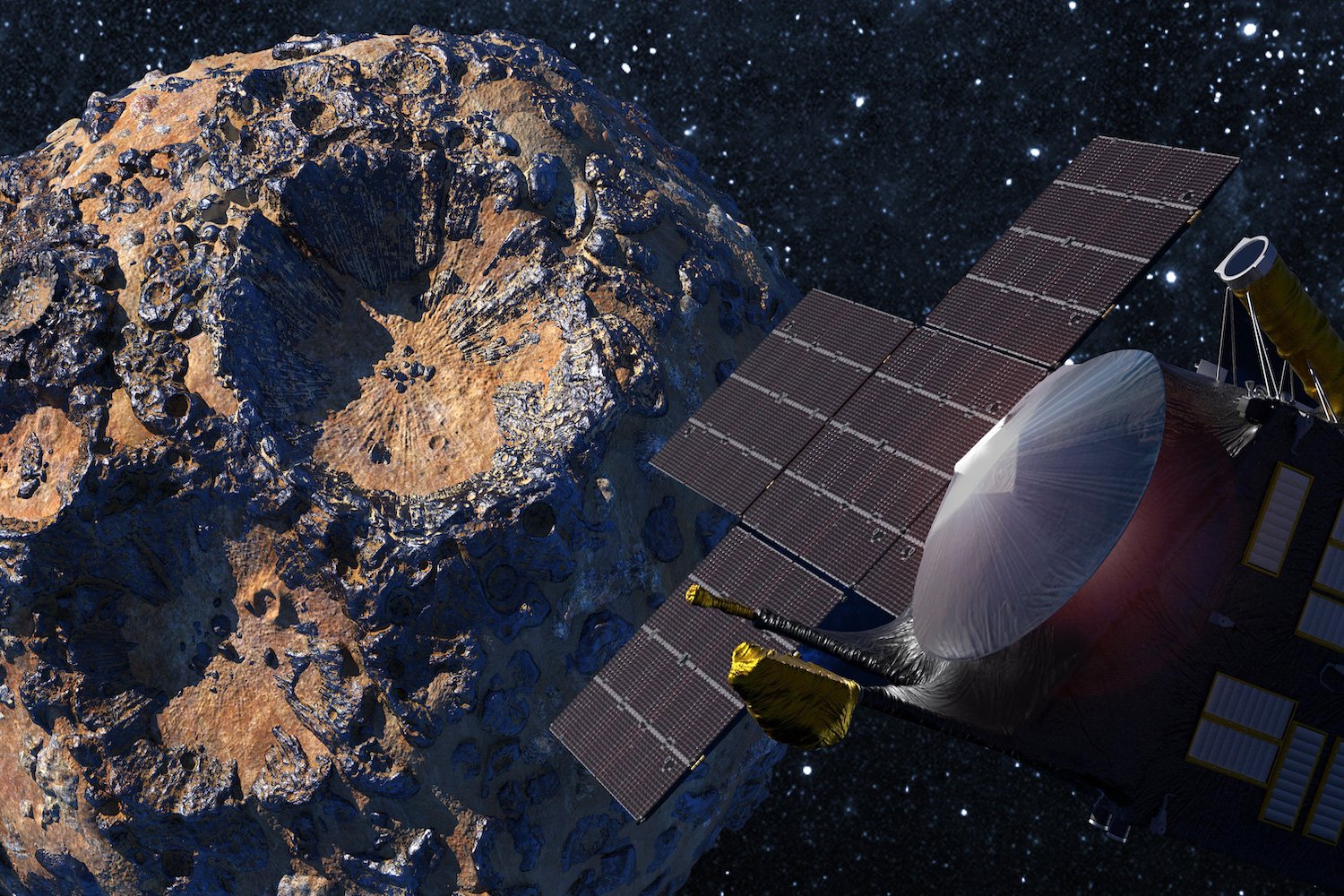
Psyche Mission Faces Propulsion Hiccup on Journey to Metal Asteroid
The Psyche spacecraft, launched nearly two years ago on a mission to explore a unique metal-rich asteroid also named Psyche, has encountered a challenge with its propulsion system. This issue, involving a decrease in fuel pressure, has prompted NASA engineers to halt the spacecraft’s thrusters while they investigate the root cause and potential solutions. The mission, aiming to shed light on the origins of Earth and the formation of planets, is currently en route to its target in the main asteroid belt, situated between Mars and Jupiter.
The Psyche mission represents a bold endeavor to study an asteroid unlike any other visited before. Psyche, the asteroid, is believed to be the exposed metallic core of a shattered planetesimal, a building block of planets that failed to fully form. By studying this asteroid, scientists hope to gain valuable insights into the processes that shaped our own planet and others in the solar system.
The spacecraft embarked on its 2.2 billion-mile journey in October 2023, utilizing a solar electric propulsion system. This innovative system harnesses the power of the sun to generate electricity, which in turn drives four electric thrusters. These thrusters, powered by xenon gas, provide a gentle but continuous thrust, gradually propelling the spacecraft towards its destination.
In May 2024, the spacecraft initiated its thruster firings, marking a crucial phase of its long voyage. However, on April 1, an anomaly was detected: a sudden drop in the pressure of the xenon gas line feeding the thrusters. The pressure plummeted from 36 pounds per square inch (psi) to approximately 26 psi, triggering an automatic shutdown of the thrusters as a safety precaution.
NASA’s mission team is now diligently working to understand the cause of this pressure decrease. The issue needs to be resolved before mid-June to avoid any significant impact on the spacecraft’s carefully calculated trajectory. According to NASA, the team has decided to postpone any further thrusting until the problem is fully understood and addressed.
The mission has some leeway, as the thrusters can remain inactive for another month and a half before corrective action becomes critical. This buffer period allows the engineering team ample time to diagnose the issue and implement a solution. One potential solution under consideration is switching to the spacecraft’s backup fuel line, which could allow the thrusters to resume firing and maintain the planned trajectory.
Despite this setback, NASA officials remain cautiously optimistic. Louise Prockter, director of NASA’s planetary science division, stated that such issues are not uncommon in space missions and that the mission is designed with built-in redundancy to handle unforeseen circumstances. The team is actively monitoring the situation and is confident in their ability to overcome this challenge.
The planned mission timeline remains largely unchanged. If the propulsion issue is resolved successfully, the spacecraft is expected to enter orbit around asteroid Psyche in late July 2029, commencing its primary mission in August of the same year.
A key milestone along the way is a planned flyby of Mars in the spring of 2026. This flyby will serve as a gravitational slingshot, utilizing the red planet’s gravitational pull to accelerate the spacecraft and redirect it towards the main asteroid belt. This maneuver is crucial for optimizing the spacecraft’s trajectory and reducing the overall travel time.
Asteroid Psyche itself is a fascinating and enigmatic object. Measuring approximately 140 miles (226 kilometers) in diameter, it is one of the largest asteroids in the main belt. What sets Psyche apart is its composition: unlike most asteroids, which are primarily composed of rock and ice, Psyche is believed to be composed largely of metallic iron and nickel, similar to the Earth’s core.
This unique composition has led scientists to hypothesize that Psyche is the remnant of a protoplanet that was stripped of its outer layers during the early solar system. By studying Psyche, researchers hope to gain a better understanding of the processes that formed planetary cores and the evolution of the solar system as a whole.
The Psyche mission has faced its share of hurdles since its inception. Originally scheduled to launch in 2022, the mission was delayed due to issues with the spacecraft’s flight software. This software is responsible for controlling the spacecraft’s orientation, trajectory, and communication with Earth. The delay allowed engineers to thoroughly test and refine the software, ensuring its reliability for the long journey ahead.
Even closer to the revised launch date of October 5, 2023, another issue emerged. Engineers discovered a potential overheating problem with the spacecraft’s thrusters. This issue could have jeopardized the mission’s success during its eight-year journey. As a result, the launch was delayed by one week while the team implemented a solution.
These past challenges highlight the complexity and inherent risks associated with deep-space missions. However, they also demonstrate the dedication and resourcefulness of the NASA team in overcoming these obstacles. The current propulsion issue is just the latest in a series of challenges that the Psyche mission has faced, and the team is committed to finding a solution and ensuring the mission’s success.
The Psyche mission represents a significant investment in space exploration and scientific discovery. Its potential to unlock the secrets of planetary formation and the early solar system makes it a highly anticipated and valuable endeavor. Despite the current propulsion issue, the mission team remains focused on its goals and is working diligently to ensure that the spacecraft reaches its destination and fulfills its scientific objectives. The journey to Psyche is long and complex, but the potential rewards make it a mission worth pursuing.
